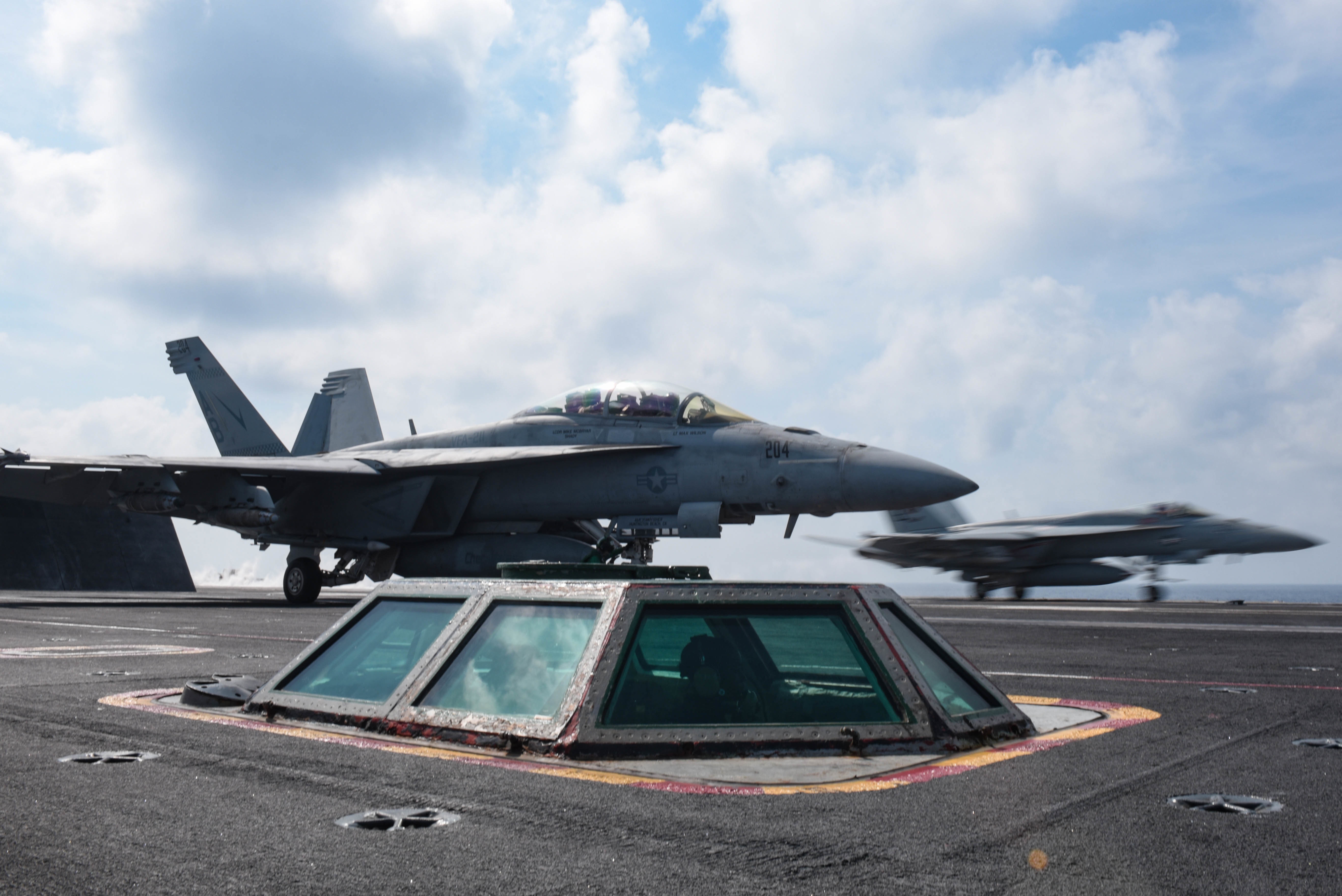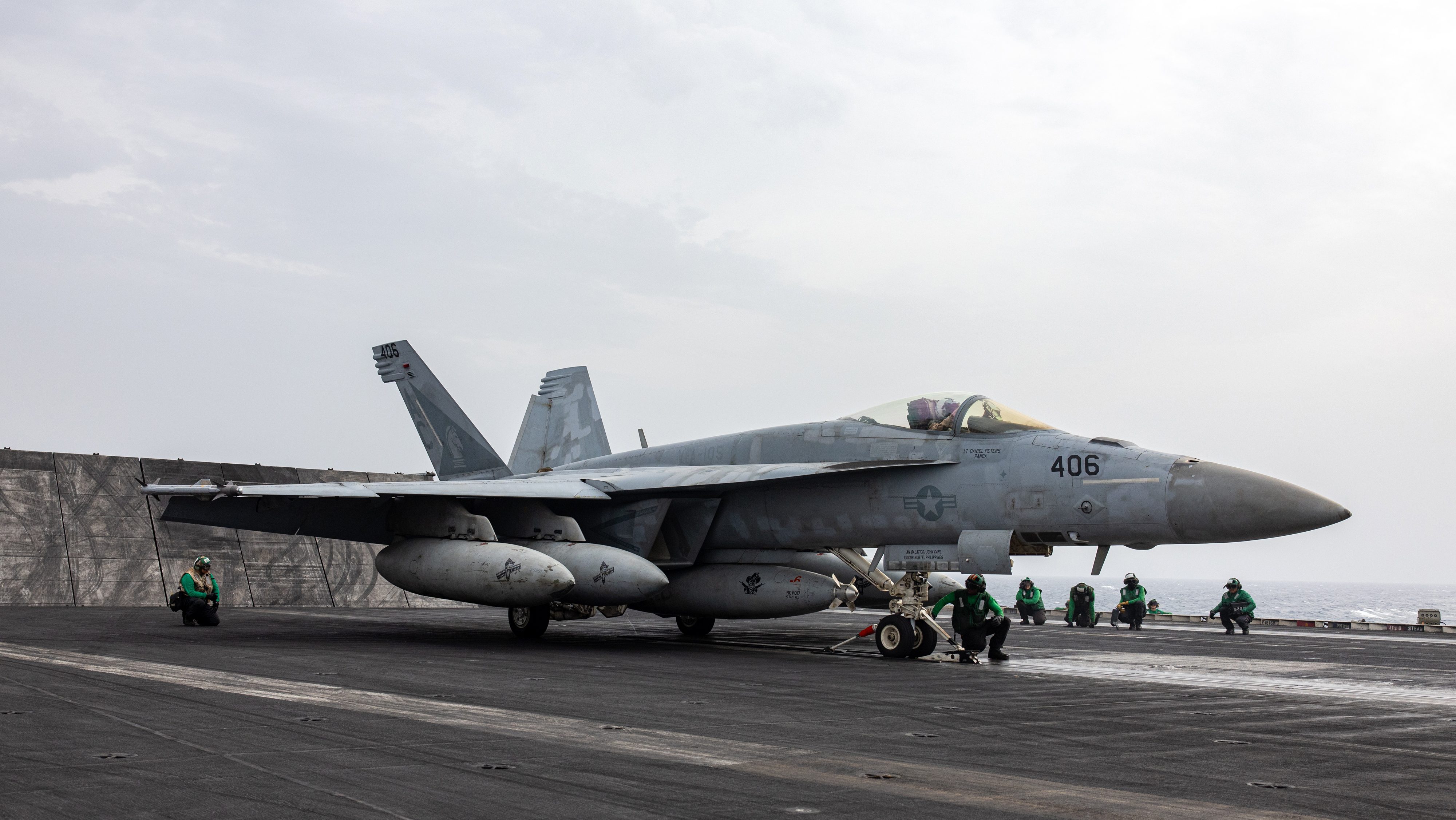$67M Down! Navy Jet Lost at Sea: What Happened & Why?
$67 Million Splash! US Navy Jet Plunges into Red Sea
Introduction: A Costly Dip in the Ocean
Hold on to your hats, folks! The U.S. Navy just experienced a rather expensive mishap. We're talking about a $67 million F/A-18E Super Hornet fighter jet taking an unplanned swim in the Red Sea. That’s more than most people make in a lifetime – gone in a splash! The Navy is now investigating how this expensive piece of hardware ended up at the bottom of the ocean.
The Incident: What Happened on the USS Harry Truman?
So, what exactly went down? According to the Navy, the F/A-18E, along with its tow tractor (think of it as a miniature tractor for airplanes), took an unexpected dive off the deck of the U.S.S. Harry Truman. It’s like watching your car roll off a cliff, but much, much worse. Imagine the moment when sailors watched $67 million slide overboard!
One Injury, Many Questions: Initial Reports
Thankfully, despite the costly loss, only one sailor sustained a minor injury. That's a huge relief considering the potential for disaster. Everyone else on the crew managed to scramble out of harm's way. But the incident raises a lot of questions. How could a modern fighter jet, being towed no less, simply fall off an aircraft carrier?
The Official Explanation: Loss of Control
The Navy’s statement indicates that the "move crew lost control of the aircraft" while it was being towed in the hangar bay. The aircraft and the tow tractor were subsequently "lost overboard." It sounds almost comical, doesn't it? But the implications are serious. Was it human error? Mechanical failure? A combination of both?
Investigation Underway: Seeking Answers
Naturally, a full investigation is now underway. The Navy wants to know exactly what happened to prevent similar incidents in the future. You can bet someone is having a *very* bad day right now. This isn't just about the money; it's about safety protocols and ensuring the readiness of our naval forces.
Why Towing Aircraft Matters
Fighter jets are routinely towed around aircraft carrier hangar decks to optimize space for flight operations or maintenance. Think of it as parallel parking, but with incredibly valuable and delicate machines. Efficient movement is key to maximizing the carrier's operational capacity.
F/A-18E Super Hornet: A Powerful Asset
Capabilities of the Super Hornet
The F/A-18E Super Hornet isn’t your average airplane. It’s a multirole fighter jet, capable of air-to-air combat, air-to-ground attacks, and reconnaissance missions. It's the Swiss Army knife of naval aviation. Losing one is a significant blow to the Navy's capabilities, even if temporarily.
Costly Replacement: A Blow to the Budget
Replacing a $67 million aircraft isn’t exactly cheap. This incident will undoubtedly put a strain on the Navy's budget. Every dollar counts, and losing that much hardware is a serious fiscal hit.
Location, Location, Location: The Red Sea Context
Strategic Importance of the Red Sea
The Red Sea is a crucial waterway connecting the Mediterranean Sea to the Indian Ocean. It’s a vital shipping lane and a region with significant geopolitical importance. The U.S. Navy maintains a strong presence in the area to ensure stability and protect U.S. interests.
Environmental Concerns: Salvage Operations
Given the location of the incident, salvage operations will need to consider the environmental impact. Recovering the wreckage will be a complex and delicate operation. The Navy will need to take steps to minimize any potential pollution or damage to the marine environment.
Potential Causes: What Could Have Gone Wrong?
Human Error: A Common Factor
While the investigation is ongoing, human error is often a contributing factor in these types of incidents. Did someone make a mistake during the towing process? Were proper safety procedures followed? These are the questions investigators will be asking.
Mechanical Failure: Equipment Malfunctions
It’s also possible that a mechanical failure contributed to the accident. Did the tow tractor malfunction? Was there a problem with the aircraft's tie-down system? Equipment malfunctions can happen even with regular maintenance.
Weather Conditions: Unforeseen Factors
Although not explicitly mentioned in the initial reports, weather conditions could have played a role. Even on a seemingly calm day, unexpected gusts of wind or choppy seas can create hazardous conditions on an aircraft carrier deck.
Past Incidents: Learning from History
Unfortunately, this isn't the first time the Navy has lost aircraft at sea. Learning from past mistakes is crucial to preventing future incidents. Each accident provides valuable lessons about safety protocols, equipment maintenance, and personnel training.
The Impact on Naval Operations: Short and Long Term
In the short term, the loss of the F/A-18E may slightly impact the U.S.S. Harry Truman’s operational capabilities. However, the Navy has redundant systems and a strong overall force, so the impact is likely to be minimal. Long term, the Navy will need to address the root causes of the incident to prevent similar occurrences in the future.
The Future of Naval Safety: Prevention is Key
This incident highlights the importance of continuous improvement in naval safety protocols. Regular training, rigorous maintenance, and a culture of safety are essential to minimizing risks and protecting valuable assets. The Navy will undoubtedly use this experience to refine its procedures and enhance its overall safety record.
Conclusion: Lessons from the Deep
The loss of a $67 million fighter jet is a sobering reminder of the inherent risks involved in naval operations. While the investigation is still underway, it’s clear that a combination of factors may have contributed to the accident. The Navy will need to learn from this experience and take steps to prevent similar incidents in the future. The focus will undoubtedly be on enhancing safety protocols, improving personnel training, and ensuring the proper maintenance of equipment. And, of course, figuring out how to avoid another expensive dip in the Red Sea.
Frequently Asked Questions
- What exactly is a tow tractor and why is it used on an aircraft carrier?
A tow tractor is a specialized vehicle used to move aircraft around the confined spaces of an aircraft carrier's flight deck and hangar bay. It's like a miniature truck designed for the unique needs of maneuvering jets in tight spaces. They're crucial for efficient operations. - How deep is the Red Sea where the jet went down, and how will that affect the salvage operation?
The Red Sea's depth varies significantly. The specific location of the crash will determine the complexity of the salvage operation. Deeper water means more specialized equipment and longer recovery times, increasing the cost and difficulty. The Navy will likely use remotely operated vehicles (ROVs) and deep-sea divers. - What are some of the potential environmental impacts of a fighter jet sinking in the Red Sea?
Potential environmental impacts include fuel leaks, the release of hydraulic fluids, and the breakdown of materials used in the aircraft’s construction. These substances can contaminate the water and harm marine life. The Navy will need to mitigate these risks during the salvage operation. - Besides the cost of the aircraft itself, what other expenses are involved in an incident like this?
Beyond the $67 million for the jet, there are significant costs associated with the investigation, the salvage operation, environmental remediation, and potential repairs to the aircraft carrier. Personnel time and specialized equipment add to the overall financial burden. Legal and insurance considerations might also factor in. - How does an incident like this affect the morale of the sailors on board the U.S.S. Harry Truman?
Incidents like this can impact morale, especially if sailors feel that safety protocols were not followed or that more could have been done to prevent the accident. However, the fact that only one minor injury was sustained likely mitigates some of the negative impact. Leadership will play a crucial role in addressing any concerns and reinforcing a culture of safety and teamwork.

